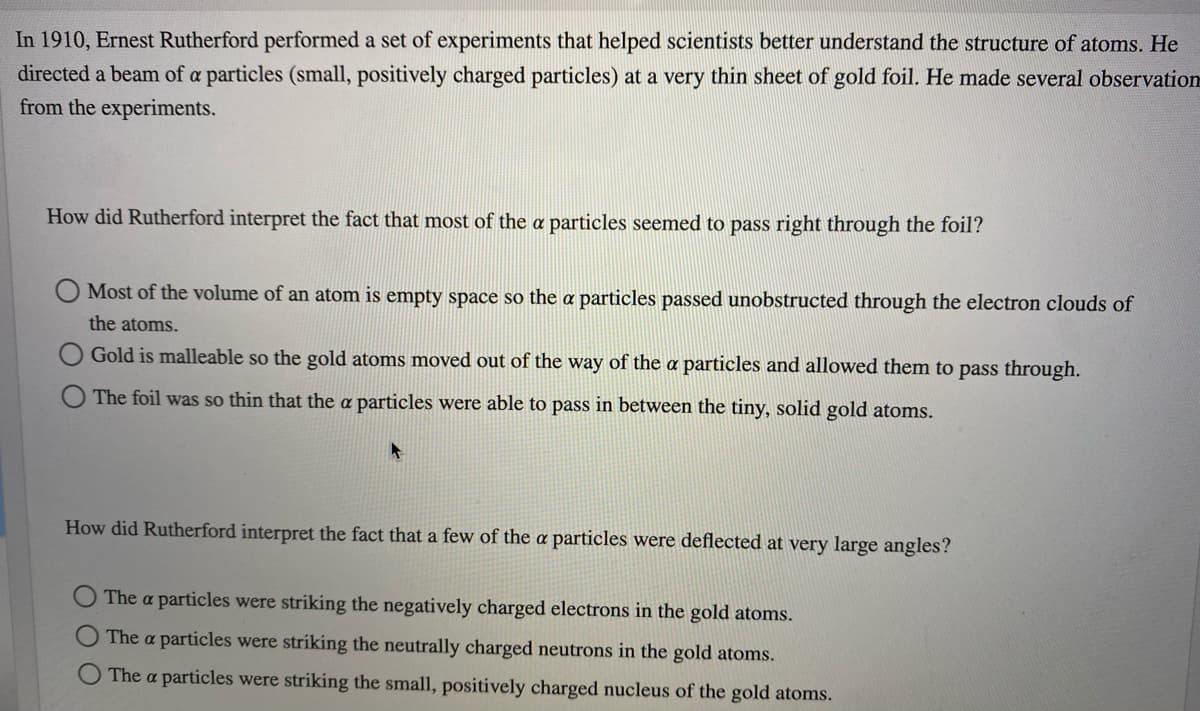n 1910, Ernest Rutherford performed a set of experiments that helped scientists better understand the structure of atoms. He lirected a beam of a particles (small, positively charged particles) at a very thin sheet of gold foil. He made several observation rom the experiments. How did Rutherford interpret the fact that most of the a particles seemed to pass right through the foil? Most of the volume of an atom is empty space so the a particles passed unobstructed through the electron clouds of the atoms. Gold is malleable so the gold atoms moved out of the way of the a particles and allowed them to pass through. The foil was so thin that the a particles were able to pass in between the tiny, solid gold atoms. How did Rutherford interpret the fact that a few of the a particles were deflected at very large angles? The a particles were striking the negatively charged electrons in the gold atoms. The a particles were striking the neutrally charged neutrons in the gold atoms. The a particles were striking the small, positively charged nucleus of the gold atoms.
Electron Affinity
When an element undergoes a chemical reaction, it either gains energy or loses energy. This gain or loss of energy is due to the phenomena that occur at atomic level. During reaction, atoms either gain electrons from other atoms or lose electrons to other atoms, and in that process, energy is produced.
P-Block Elements
Elements which are present on the right side of the periodic table are called p-block elements. In addition to the noble gases, they include the families of boron, mercury, nitrogen, oxygen and fluorine. These elements have diverse real-life implementations that we regularly experience around us.
Metals and Non-metals
The periodic table is composed of metals, semi-metals and nonmetal elements. The physical and chemical properties of metals and nonmetals differ from each other. The study of metals and nonmetals will help one to understand the appropriate application of the particular element.

Trending now
This is a popular solution!
Step by step
Solved in 2 steps with 2 images









